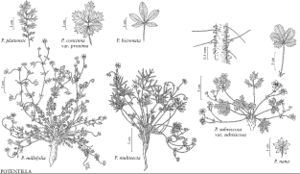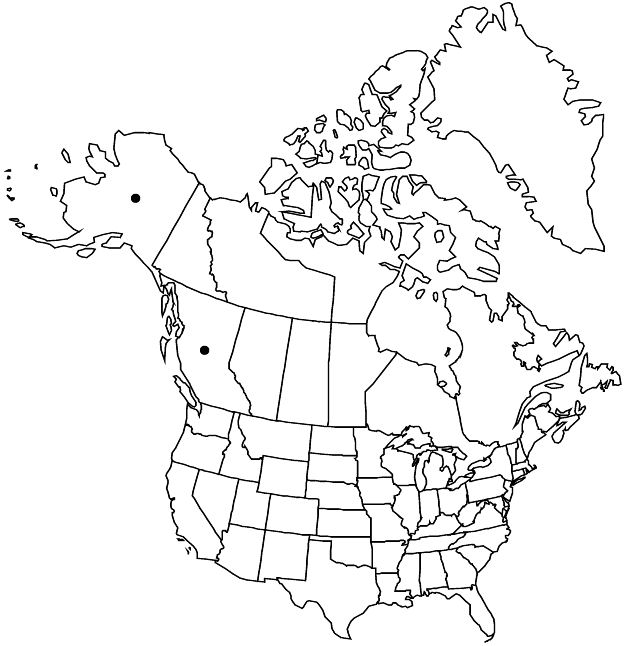Difference between revisions of "Potentilla nana"
Ges. Naturf. Freunde Berlin Mag. Neuesten Entdeck. Gesammten Naturk. 7: 296. 1816.
FNA>Volume Importer |
imported>Volume Importer |
||
| Line 58: | Line 58: | ||
|publication year=1816 | |publication year=1816 | ||
|special status=Endemic;Illustrated | |special status=Endemic;Illustrated | ||
| − | |source xml=https:// | + | |source xml=https://bibilujan@bitbucket.org/aafc-mbb/fna-data-curation.git/src/bb6b7e3a7de7d3b7888a1ad48c7fd8f5c722d8d6/coarse_grained_fna_xml/V9/V9_290.xml |
|subfamily=Rosaceae subfam. Rosoideae | |subfamily=Rosaceae subfam. Rosoideae | ||
|tribe=Rosaceae tribe Potentilleae | |tribe=Rosaceae tribe Potentilleae | ||
Revision as of 00:27, 28 May 2020
Plants densely tufted; caudex branches short, slender to ± stout, diam. 0.5–1 cm, including old leaf bases. Stems ascending to erect, 0.1–0.5(–0.7) dm, lengths 1–2 times basal leaves. Basal leaves not in ranks, ternate, 1–5 cm; stipules: apex acute; petiole 0.5–3.5 cm, long hairs sparse to abundant, ascending to spreading, 0.5–2 mm, ± soft, glands sparse to common; leaflets 3, central obovate, 0.5–2 × 0.5–1 cm, petiolule 0–1 mm, margins revolute, not lobed, distal 1/2–2/3 evenly incised ± 1/2 to midvein, teeth 3–4(–6) per side, surfaces ± similar, green (paler abaxially), hairs sparse to abundant, 0.8–1.2 mm, glands sparse to common. Inflorescences 1(–2)-flowered. Pedicels straight, 0.2–1.5 cm in flower, to 5 cm in fruit. Flowers: epicalyx bractlets oblong or ovate, 2.5–5 × 1.5–3.5 mm, margins revolute; hypanthium 3–3.5 mm diam.; sepals 2.5–5 mm, apex ± acute; petals pale yellow, 4–8 × 4–6 mm; filaments 1.2–2 mm, anthers 0.3–0.4 mm; carpels 40–50, styles ± columnar, not or scarcely papillate-swollen proximally, 0.8–1.2 mm. Achenes 1.4–1.6 mm.
Phenology: Flowering summer.
Habitat: Alpine and coastal Dryas-Salix-Empetrum heaths, gravelly slopes, ridge crests, fellfields, scree and talus
Elevation: 100–1100 m
Discussion
Potentilla nana has most often been considered a race of P. hyparctica or as the priority name for P. hyparctica. As now defined, P. nana occurs in an arc across southern Alaska, from the Aleutian and Pribilof islands to the Alaskan panhandle and adjacent British Columbia. T. Wolf (1908) treated it as a dwarf form of P. fragiformis; J. Soják (1996) interpreted P. nana as a hybrid species originating from cross(es) between P. fragiformis and P. hyparctica. Although the hybrid hypothesis has morphologic support, P. nana has a unique combination of morphologic features and has a distinct range from both P. fragiformis and P. hyparctica. The species are also ecologically segregated: P. nana is a coastal heath and gravel slope species, like P. hyparctica; P. fragiformis is strictly maritime coastal.
Selected References
None.

